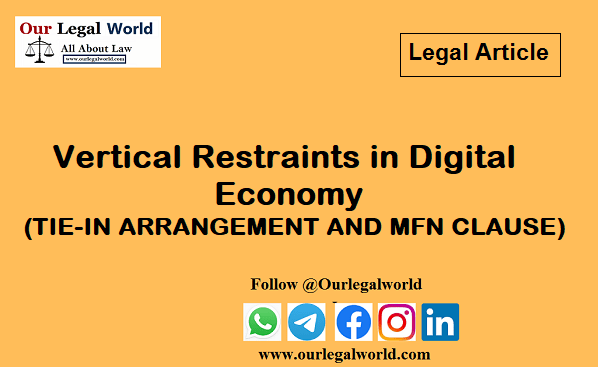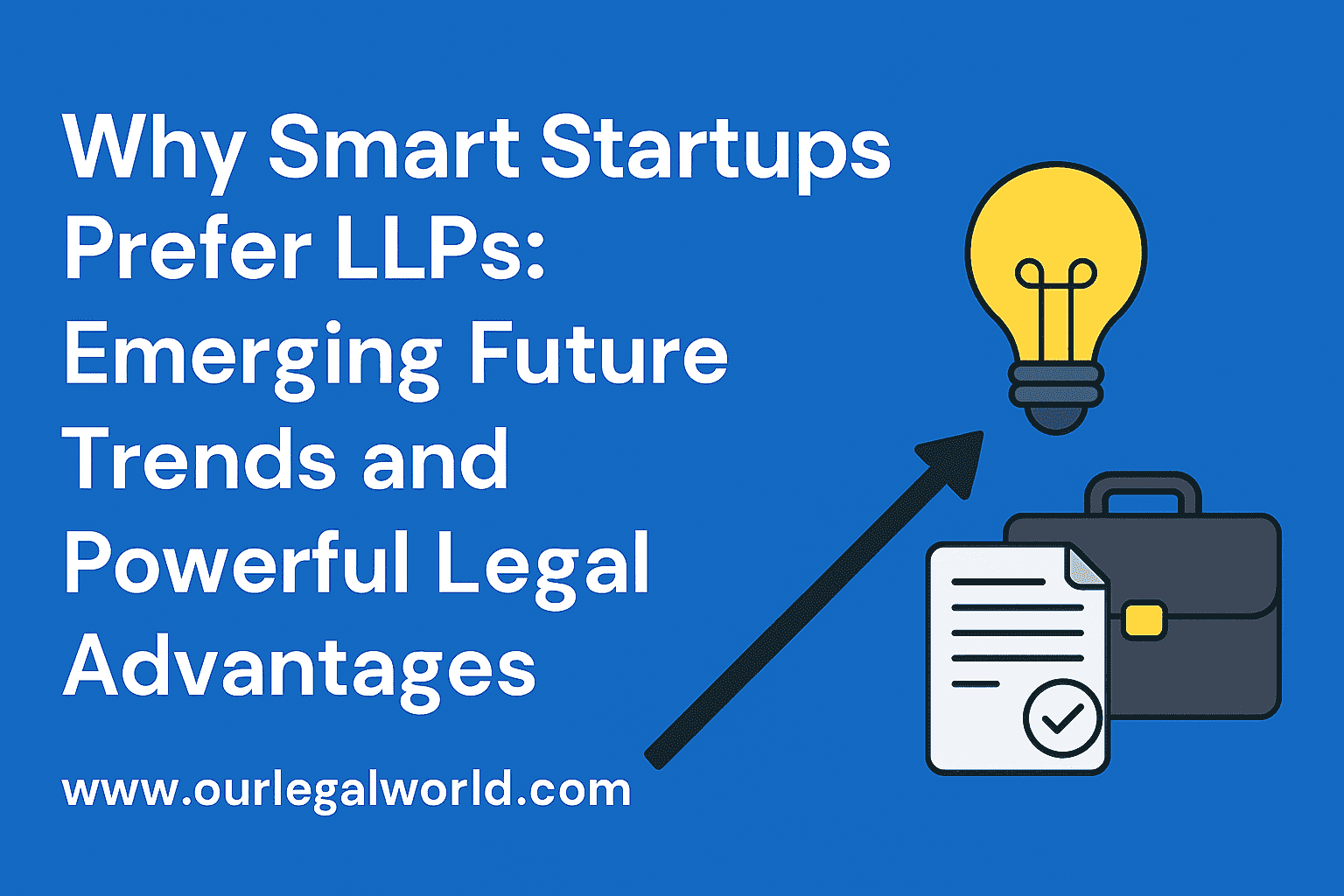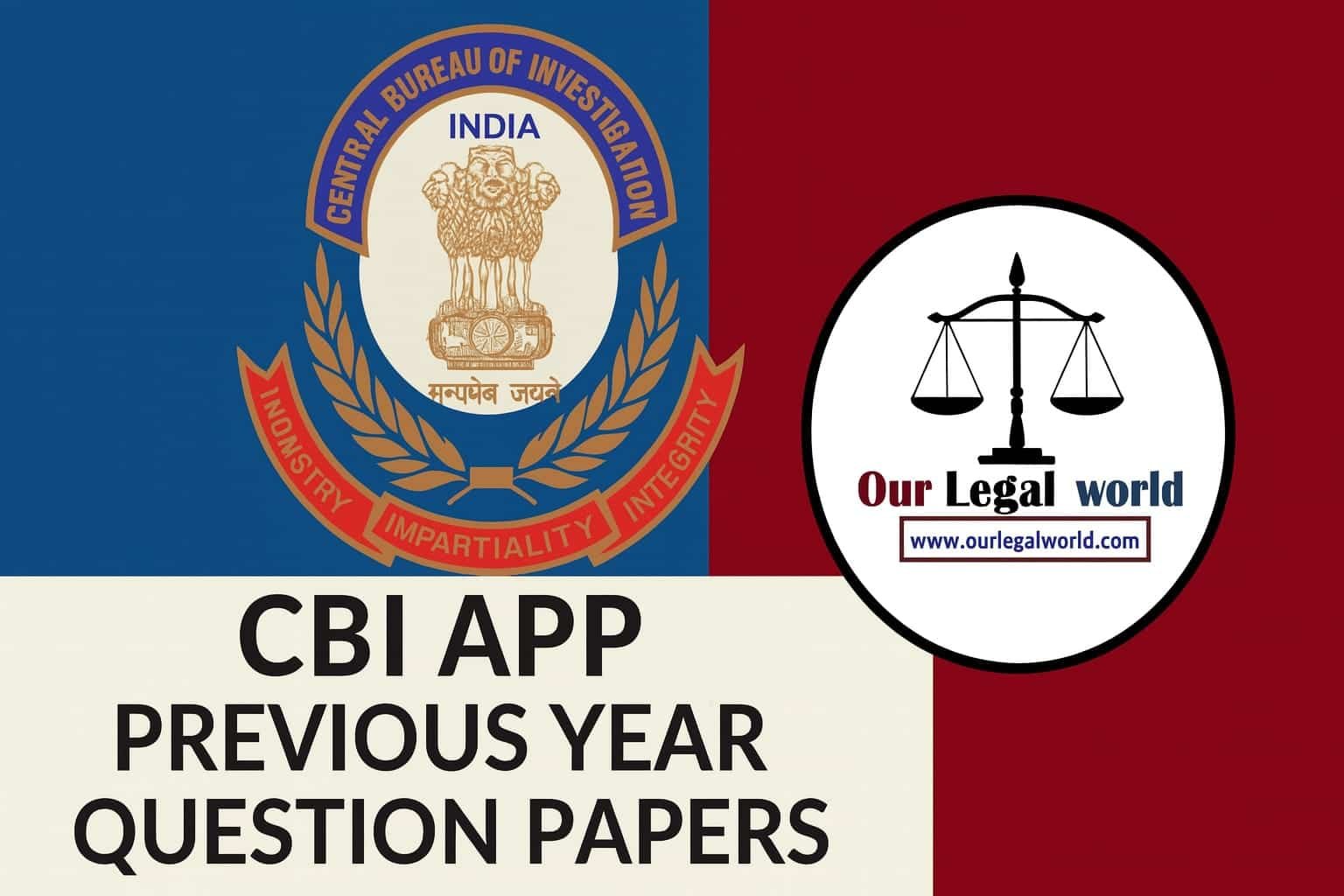VERTICAL RESTRAINTS IN THE DIGITAL ECONOMY (TIE-IN ARRANGEMENT AND MFN CLAUSE)
INTRODUCTION
In the last decade, gradual transformation in science and technology, their effect is in every sector of society. The cost efficiency and other features of the technological development started a new mode of business activities i.e E-Commerce, it often called a positive effect on economics and competition.
The development in the e-commerce/digital economy, creating various challenges before the various regulating authorities such as taxing authorities regarding how the tax imposed on the digital transactions, problems in identifying the jurisdiction etc and the Competition Authority also facing the same issue like the implication of antitrust rule on the e-commerce etc. The competition law or Anti-trust laws generally are two types in antitrudt law: horizontal and vertical. The Horizontal agreements/restraints are among the entity, person that compete on the same industry where the share the market. Another on is Vertical agreements are those involving entity, person etc that have an enter into supply chain. Vertical agreements exist between person that work at distinct stages of the manufacturing process or related things.[1]
This research paper tries to analyse the economic rationale behind the vertical restraints along with Vertical restraints in e-commerce and how are different from the traditional market vertical restraints while dealing with the anti-competitive analyses. There is some argument by the economist on vertical restraints saying VRs do not look like HR which always have an anticompetitive impact on the competition but VRs are pro-competitive. This paper also analyses whether this argument applies to the digital economy also or has an entirely anticompetitive element are there in the vertical agreements, these arguments will analyse in the light of Indian Competition jurisdiction, with reference to other countries anti-competitive approach to Vertical agreements on e-commerce.
RESEARCH QUESTION
1. Whether the vertical restraint are just economic concept?
2. Whether the bricks-and-mortar condition of anti-competitive are also capable to identify the problem in the digital vertical restraints?
3. Whether the online tie-in arrangement and MFN Clause are cover under the current Indian Competition Jurisprudence?
LITERATURE REVIEW
The author Vikas Kathuria, in his research paper “Vertical Restraints under Indian Competition Law: Whither Law and Economics” [2] has explain the concept of vertical restraints in under the competition law of India and European Union. The author arguments are mainly on the economics behind the vertical restraints and while the analysing the any vertical agreement, which likely to cause AAEC. The author also dealt with the vertical restraints in the digital world, which I am going to analyse in this paper. But there argument is more suitable to the traditional mode of economy mainly.
The author David S. Evans in his Vertical Restraints in a Digital World[3] dealt with the various firstly explain the difference between the offline and online market with the relevance under the competition law and role of economics. The paper also explain the various vertical restraint in the digital economy by the platform such as the MFN clause, tie-in arrangement.
The Chapter 6 of Economics for Competition Lawyers (2nd) written by Gunnar Niels, Helen Jenkins, James, Kavanagh.[4] The authors are dealt very details analysis of the vertical restraints with the economic and business practices and the Law, and the Economics. The authors provide the 19th century economic theory which monopolistic market created by the intermediaries. The Author giving various example on Resale Prise Maintenance, Exclusive Territories and MFN clause, with various case laws decided in the USA and European Union.
DIGITAL ECONOMY
The digitization of the economy also changed the infrastructure of the economy. However, the antitrust laws or competition laws do not enact in the light of the digital economy, which were enacted during that times when the economy were largely “physical”, may not effective as the requirement in the virtual world. The current economic model had been developed as long as the nature or conduct has a lot of similarities, the changes in the characteristics of the relevant structure of the economy would only create a new challenges in while applying the existing rules. To put it another way, a fine-tuning of competition law, rather than a revolution, may be required to match the difficulties of the digital economy.
The CCI in both cases Deepak Verma v. Clues Network[5] and K. C. Marketing, Maharashtra v OPPO Mobiles MU Private Limited[6] ruled there must be relevant market while decided in anti-competitive act. But the Online and offline are just the mode not different relevant market.
In the Digital Economy, every authority has facing the issue, because the tradition mode are because ill-equable to tackle the challenges arising in the virtual world. Illustration in the International Tax domain the concept of Permanent Establishment are there but in the e-commerce transaction current DTTAs and tax treaties become ineffective.[7]
WORLD LARGEST DIGITAL BUSINESSES AND THEIR PLATFORMS
| Company | Platforms |
| Microsoft | Windows, Bing, |
| Alphabet | Android (including Google Play), Google, YouTube |
| Facebook, Messenger, Instagram, WhatsApp | |
| Amazon | Prime, |
The above said corporate entity are dominate the entire digital economy, in many case European Union, American, and Indian anti-trust authority imposed heavy penalty on the all company under anti-competitive head. But many case the authority had failed to determine whether their acts are anti-competitive and how they dominate the market, because in the Digital economy very difficult to prove such thinks.
VERTICAL AGREEMENT
In economic practice at large, through vertical agreements there is agreement for the distribute products or services instead of direct sales at different level. Vertical agreements also impose certain restriction on the seller. The retailer and seller agreement imposed restrictions on various levels of supply or distribution chain, there are many types of Vertical Restraints:-[8]
- tie-in arrangements: Under this seller tie two different product and service and “buyer of goods/services is condition to buy any other goods/services as a condition;
- exclusive supply agreements: there is a restriction in different mode, the consumer from acquiring or otherwise dealing with the goods of the seller or any person;
- exclusive distribution agreements: under this there is a restriction in the agreement to sell by location, product type etc.
- refusal to deal: under this there is a might be express or implied restriction on brought or sell through the vertical restraint
- resale price maintenance: any agreement in which products are sold with the understanding that the resale price will be the seller’s price unless it is expressly stated that prices lower than those prices will be charged.
In India, Competition Act 2002, also explain the vertical agreements read as “the vertical agreements are entered amongst Enterprises or Persons at different stages or levels of the production chain in different markets in relation to production, supply, distribution, storage, sale or price of or trade in goods or provision of services.”[9]
These types of economic practices are still present in the traditional model of the economy, but the real question areas, whether e-commerce can carry the same pattern of vertical restraint in the virtual world?. This paper will try to find out the answer, through regulatory pronouncements, and economist analysis on the topic. Under the vertical Restraints I will deal few types which related to the online digital economy/ e-commerce.
AGREEMENT
Before dealing with Vertical restraint in detail there must be know the meaning of agreement in the Competition law preview. The Competition Act defined ‘the term an ‘agreement’ includes “any arrangement, understanding or action in concert. Under the Indian Competition Act, In the Indian System, an agreement does not have to be in writing and is not required to be legally enforceable.”[10]
The Indian Competition Authority in i.e CCI in Re Director General (Supplies & Disposals) Directorate General of Supplies & Disposals,[11] ruled that such “understandings” can be tacit, and the term includes circumstances in which the participants behave with a “nod or a wink.” The CCI can also record circumstantial evidence, behaviour, or conduct of the parties in order to prove the existence of an agreement. The preliminary order in the Snapdeal Case stated that “the existence of agreement may be inferred from coercive conduct when the level of coercion used to impose an apparent unilateral policy, in combination with the number of distributors who are actually implementing the supplier’s unilateral policy, would, in practise, point to tacit acquiescence by the other party or parties.”
CCI’S TAKE ON THE E-COMMERCE SECTOR
The CCI had asked a few important questions while determining the cases related to vertical restraints in the e-commerce sector has one of the questions is that is the definition of the appropriate market. Whether online vertical agreements between e-commerce platforms and third-party businesses selling on such platforms qualify as distributors in a vertical distribution chain or as providers of inter-mediation platform services?
In Ashish Ahuja v. Snapdea[12]l, CCI said, the online and offline are different in terms of market experience but these differences do not make this different relevant market. CCI also noted consumers are taking benefit of it and market share has also increased.
In Mohit Manglani v. Flipkart India[13], CCI had ruled that there is no need to determine the relevant market in e-commerce due to the parties not being dominant in both the online and offline markets individually.
In Brick-and-mortar, regulators are more comfortable while determining the fact whether there is any violation of law or not but in the digital economy, nothing is clear its totally depend on case to case.
The authors therefore contend that the CCI should disregard its existing one-size-fits-all approach to curb the anti-competitive tendencies that arise in e-commerce sector.
ECONOMIC REASON BEHIND VRS
In Vertical restraints, there is a producer that agrees to supply to a distributor that certain qualitative criteria- to particular appointed authorized distributors and authorized to sell only to end-consumers or other appointed distributors. In a few cases, Vertical restraints are further restricted by some quantitative criteria, such as the maximum number of authorized distributors.
The vertical agreement does not necessarily have an anti-competitive reason behind it, nor most importantly, do they always have negative effects on the consumers, the same opposite is HR. The development of the technology, have very significant impact of the economy too, e-commerce become the one of the growing sector in world. [14]
The vertical restraint are crated through the agreement between the different levels of industry, not like the HRs where same level of player are there. In the online the platform and supplier are the part of this agreement.
The 19th century economists has giving formal models showing the problem of monopoly, they also discovered what is worse than a monopolist, from producer to end-consumer, a product passes through the various level of people. Selective distribution, MFN Clause, tie-in arrangement etc. are the example of the vertical restraint which is entirely based on the economic theory.
The MFN clause are now become the part of the business, in the digital economy the platform make arrangement with the various service and goods provider to sell the particular thing at the particular rate. But MFN clause not always anti-completive but the nature of such type of contract are likely effect the consumer and economic at large.
TIE-IN ARRANGEMENT
In Vertical restraint, Tie-in arrangement, isn’t violative in essence yet in the event that it has an obvious negative effect on the competition. One school of thought said about Tie-in arrangements have pros and cons in the competition. On one hand, tie-in arrangements do discriminate by creating boundaries through imposing a business model of the tied and tying goods/services. Under tie-in arrangements the customers/ end-user may get profit by providing them with products or administrations in a package that are required and at bring down costs.
Under tie-in arrangement, some additional condition with a service or product is tied to the primary object. In in the digital economy, e-commerce common system it could refer to something like a delivery system, where say Flipkart, Amazon etc which is an e-tailer, and E-Kart which provides the delivery of certain products through Flipkart could also be considered as a tie-in arrangement, whereby they are agreeing for the delivery services.
This above said example is a mix of digital economy and traditional economy. Under the tie-in arrangement with respect of Competition and Anti-Trust Law is specific and does not have a very wide ambit example Flipkart and E-Kart might be cover under the Competition but the ambit is very limited. Under Competition law, a tie-in arrangement refers to a situation where the platform provide good or a provider of a service, with the implied service of the that another service i.e is delivery shall have to be take with the purchase of the first-mentioned good or service.[15]
When the consumer have an option to easily switch between apps or websites it is possible that “competition is only a click away.” Of course, being able to click on an alternative is only one component of being able to multi-home, which would necessitate more thought in a real-world scenario. But the nature of the digital economy is very difficult identify the relevant market and whether tie-in arrangements will violative to the competition act, the authority have to decide whether such act is anticompetitive or no by case to case.
In Sonam Sharma v. Apple Inc & Ors CCI provide a the few guidelines must be determined while the establish an anticompetitive tie-in arrangement:
- Under this there must be two different products or services in the arrangement;
- There must be a condition on the buying of one and the buying of 2nd goods/ services; (Example Delivery Services of Online Platform)
- The seller have sufficient economic control in the relevant market, to compel the purchase of the linked item; and
- • The tie-in agreement must have a significant impact on competition in the relevant market..[16]
The above said factor are given for the traditional market but it can be used in the digital market also because the pattern and the consequence are some similarity. Similar approach had been taken by the CCI in the case Harshita Chawla v. Whatsapp Inc,[17] where question arise before the regulatory on the FinTech industry example WhatsApp Pay, which introduce by the Whatsap, the question whether this service type considered as a tie-in arrangement. The CCI has dismissed the said allegation on the ground of merely because WhatsApp Pay can be access through the WhatsApp Messenger user have not necessarily amount to user in real time they using WhatsApp Pay. Both Messenger and Pay services are separate and did not influence the consumer choose. In other word there are two mainly ground Firstly, that the factor of coercion while buying and using the two products/ services together was absent; and secondly, because the entry of WhatsApp Pay is not capable of foreclosing competition in the online payment services market.
Another example of tie-in arrangement in services amazon prime, where amazon doing fast delivery to prime user, they defiantly come under the preview of vertical restraint. During the covid type online delivery portal grow very fast, new and existing player come into the market. The food delivery app like swiggy market share increased during covid along with the stated tie-in services such as Swiggy Super, under which free delivery for Swiggy Super user or customer.
Another example of the tie-in arrangement Hosting provider they, tie services like Customs Email, domain, website security feature etc. But not all tie-arrangement are forcefully, some time they wanted to increase the market share of different service along with other.
ACROSS PLATFORM PARITY AGREEMENTS (‘APPA’)[18]
In the vertical arrangement, the another restraint is APPA which is also known as ‘Most Favored Nation’ Clauses (‘MFNs’), in this there is an agreements entered into between a supplier and a digital platform retailer, wherein the platform agrees to not charge a price higher than the price charged on any other platform.[19]
The agreements between platform and supplier behavior in prima facie anti-competitive, wherein in e-commerce platform enter into agreement with the supplier or producer. By doing this, they might be unintentionally fixing the prices of the product, service. After that the prices result in an increase in the retail charges, foreclosure of markets, decrease in the competition between platforms etc. Even CCI has tries to ascertained APPA’s as challenges under its recent e-commerce report (‘Report’), but CCI has failed to give the process of investigations involving such agreements, thereby making its inquiry arbitrary in nature.
Another significant challenged in the e-commerce by the online MFN is the bifurcation of a retail MFN in e-commerce platform into “wide” and “narrow” retail MFNs in online market known as platform MFNs. Under ‘narrow’ MFNs is an agreement between an online platform and A narrow MFN is one in which the seller is barred from offering better bargains to consumers directly through their own website, whereas a wide MFN is one in which the seller is banned from offering better deals to consumers via any means other than the retailer’s own website platform.7 The widespread use of MFNs in a market creates a web of agreements that essentially restrict businesses from offering competitive terms on alternative channels.
There is no legislative and legal provision of which dealt with the MFN clause in e-commerce in India. The provisions in the Indian Competition Act relating to vertical agreements is the basis for analysing the effect of online platform MFN on competition.[20] In the European Union under Antitrust jurisprudence provides analysis of Most Favoured Nation Clause in the online platform. But in EU Antitrust jurisprudence not cover every MFN clause as anticompetitive under the digital economy. Rather, the application of a rule of reason to assess the pro-competitive attributes and anticompetitive effects of an MFN is recommended.
In India late 2010s, many online start-up and foreign player enter into the Indian market, their presence in the market changed the economic pattern, and they enter into the digital economy by transferring and introducing the new mode of economy. In this paper I Will deal with the few digital economy industry.
In Federation of Hotel & Restaurant Associations of India v. MakeMyTrip India Pvt Ltd[21] Indian regulator first time examined the MFN clause. The CCI DG has examined the “MFN clause in ‘wide’ and ‘narrow’ and observed that under the Suppliers agree not to set lower prices or offer better terms through their own websites in comparison to prices/terms offered on the platform, imposing the restriction. In ‘wide parity’ clauses are those that ‘restrict a supplier from charging lower prices or providing better terms on own website’ and also on selling through different mode.” Such type of restraint defiantly having AAEC, the approach vertical restraint mostly pro-competitive are not correctly but it should be analysis case by case.
The Apple e-book case is a nicely illustrates the mechanics of an MFN and the effects it has on competitive dynamics. When in 2015 Apple found guilty of conspiring to raise the retail price of e-books through its agreements with many publisher which contained an MFN provision.[22] Before apple e-book the Amazon Kindle dominate the digital book market through the MFN clauses.
The example of MFN in the food industary where various food delivery online platforms are working, they enter agrement with the hotel for suppling the ready food. These type of agreement knwon as a Platform to Bussiness (P2B), in which the online platform such as Zomato, Swiggy, UberEats etc they make agreements to sell foods items as per the agreements and certain rate. In the agreement there is a restriction on the seller they can’t sell food at lower rate at different platform or own platform. Due to this, even seller wanted to sell the food at lower rate but such MFN clause restrict, there might be consumer lose.
ANTICOMPETITIVE EFFECTS
The anlysis of effects of the anticompetitive by the various theory give by the economic:
Vertical Restraints imposed in selective online distribution systems may (1) foreclose the market, (2) facilitate collusion, or (3) soften competition. The tie-in arrangement and MFN clause have very wider impact in the economy, the first on the platform directly/ indirectly selling product or services, and in second in through agreement controlling the prices of goods and services. Hence, both type there is a anti-competitive feature, the traditional mode will not work in the online world there is a need some separate regulation which tackle such issue.
SUGGESTION/OPINION
The Competition Law can’t interpreted in the isolation of economics, analysis of economics are very essential identify the act violative act of Antitrust Law and Competition Law. The HRs and VRs restraints/agreements have possibility to change the entire market, so the authority must have to look into the economic reason behind such type of arrangements. The bricks-and-mortar have different effect from such type of agreement and have different type effect on digital economy.
The case WhatsApp was that integration of WhatsApp Pay with Whatsapp messenger amount to tie-in arrangement with two services. This is because post-integration, a customer cannot access one service without necessarily acquiring the other one. The coercion argument which is exit in the traditional market which is not possible to same level of coercion be there in the type of tie-in arrangement in digital world. Even OECD Report on Abuse of Dominance suggests that in digital markets, coercion should not be construed in its traditional sense, report suggested that the effect of even a nudge (such as pre-installation) can be equally conceptualised as an equivalent of coercion.[23] Pre-installation have larger number of tie-in arrangement are present in online world illustration Google Services. Such type of tie-in arrangement provided space in market to another service or goods.
Across Platform Parity Agreements or MFN clause is an online market created challenges before the authority to identify the anti-competitive clauses under the particular agreement between the online platform and seller. The MFN clause in vertical restraint are not only against the consumer interest but it have very wider effect on the economic interest at large. The food and e-commerce website are just a few example of the abuse of MFN clause which control the market and consumer interest are likely to be effect. The CCI have to look into such thing because the future of Indian Economy is in Digital Economy, if such thing not identify in the current they might be become the market practice.
The various stakeholder are involve in the current digital economy, there is a need of coordination among the various authority to tackle the vertical restraint issue in the e-commerce because the effect of both offline and Online VRs are different. The VRs are largely depends upon the economics, analysis also should be done by the economists.
Written by Adv. Ashish Panday | Delhi High Court
[1] Oishika Banerji, Vertical restraints : an insight, iPleaders (2021), https://blog.ipleaders.in/vertical-restraints-an-insight/ (last visited Apr 8, 2022).
[2] Vikas Kathuria, Vertical Restraints Under Indian Competition Law: Whither Law and Economics, (2020), https://papers.ssrn.com/abstract=3589115 (last visited Apr 7, 2022).
[3] David S. Evans, Vertical Restraints in a Digital World, (2020), https://papers.ssrn.com/abstract=3551597 (last visited Apr 7, 2022).
[4] Gunnar Niels, Helen Jenkins, James, Kavanagh, Economics for Competition Lawyers, Chapter 6 and 7 2nd Edition (2016)
[5] CCI, Case No. 34/2016, order dated 26.07.2016
[6] CCI, Case No. 34 of 2018
[7] Available at https://ourlegalworld.com/role-of-tax-treaties-written-by-advocate-ashish-panday/
[8] Abir Roy, Competition Law in India: A Practical Guide, 220 (Kluwer Law International, 2016)
[9] Section 3(4) of Competition Act
[10]Section 2(c) of Competition Act.
[11]Re Director General (Supplies & Disposals) Directorate General of Supplies & Disposals, Department of Commerce, Ministry of Commerce & Industry, Government of India, Reference Case No. 01 of 2012
[12] Case No. 17 of 2014. Case: Mr. Ashish Ahuja Vs Snapdeal.com through Mr. Kunal Bahl, CEO and SanDisk Corporation, Gurgaon through Mr. Rajesh Gupta, Country Manager. Competition Commision of India, vLex, https://vlex.in/vid/mr-ashish-ahuja-vs-545894738 (last visited Apr 8, 2022).
[13] CCI’s Take On The Indian E-Commerce Market: Protect Competition, Not Competitors – Anti-trust/Competition Law – India, https://www.mondaq.com/india/trade-regulation-practices/400076/cci39s-take-on-the-indian-e-commerce-market-protect-competition-not-competitors (last visited Apr 8, 2022).
[14] Kathuria, supra note 2.
[15]Alan Prince, ANALYSIS OF TIE IN AGREEMENTS UNDER COMPETITION LAW, 4 11 (2018).
[16] India: Vertical Restraints, https://globalcompetitionreview.com/review/the-asia-pacific-antitrust-review/2021/article/india-vertical-restraints (last visited Apr 6, 2022).
[17] Harshita Chawla v. Whatsapp Inc, Case No. 15 of 2020
[18]E-Commerce and Vertical Agreements: Is The Latter’s Scope Under the Competition Act Limited?, NUALS Law Journal (2020), https://nualslawjournal.com/2020/06/30/e-commerce-and-vertical-agreements-is-the-latters-scope-under-the-competition-act-limited/ (last visited Mar 31, 2022).
[19]Ariel Ezrachi, The Competitive Effects of Parity Clauses on Online Commerce, 11:2-3 EUR. COMPET. J. 488 (2015)
[20] Section 3(4) Competition Act 2002
[21] In Re: FHRAI v. MakeMyTrip India Pvt Ltd And others, Case No. 14 of 2019
[22] United States v Apple Inc.No. 13-3741 (2nd Cir. 2015)
[23] OECD (2020), Abuse of dominance in digital markets available at (https://www.oecd.org/daf/competition/abuse-of-dominance-in-digital-markets-2020.pdf)








